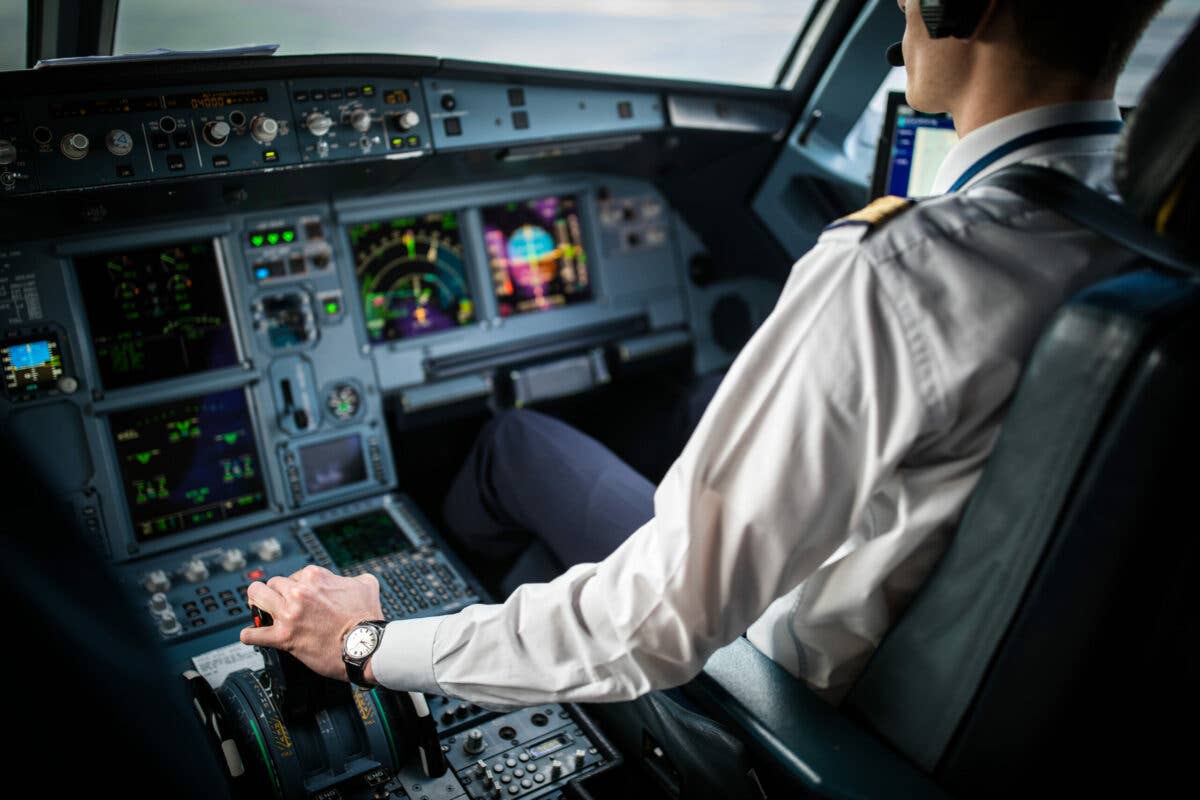Congress Urged To Boost Funding of Aerospace Education
The Senate Commerce Committee met with stakeholders to discuss aviation workforce challenges ahead of FAA Reauthorization.

The Senate Commerce Committee March 16 hearing focused on strengthening the aviation workforce comes as Congress readies for FAA Reauthorization. [Credit: Shutterstock]
The high cost of aviation training and the lack of diversity among the aviation workforce are some of the most pressing issues affecting the aerospace workforce, stakeholders told a U.S. Senate panel Thursday.
The Senate Commerce Committee March 16 hearing focused on strengthening the aviation workforce comes as Congress readies for FAA Reauthorization. Thursday’s hearing highlighted challenges facing the aviation workforce and presented solutions for improving the education, recruitment, hiring, training, and retention of workers in the industry and at the FAA. Increasing diversity and awareness for underrepresented groups was also a main topic of discussion.
Speakers representing commercial airlines, labor unions, and higher education universities testified during the hearing and urged Congress to support more funding for aerospace education to reduce barriers to entry and encourage a more diverse pool of applicants to seek careers in aviation.
In her opening remarks, Chairwoman Maria Cantwell (D-Washington) cited FAA statistics showing the economic impact aviation contributes to the United States. The industry makes up more than five percent of our GDP, contributes to 1.9 trillion in total economic activity, and supports 11 million jobs, she said.
Cantwell also acknowledged the high-paying remuneration of aviation careers with an average salary of more than $106,000 (annually)—46 percent more than the national average, according to the aerospace industry association.
She also stressed the importance of funding the FAA saying, “We must continue to invest in an FAA that has 45,000 employees including 14,000 air traffic controllers, 5,000 flight standard workers, and 1,500 aircraft certification personnel.”
Sen. Tammy Duckworth (D-Illinois) raised concerns about talks to lower the required flight time for pilots operating under Part 121 below 1,500 hours. “As a pilot, I want to reiterate my strong support for the post-Colgan air safety reforms—especially the 1,500 hour rule and express strong opposition to any proposal that would weaken safety standards in a misguided effort to address workforce challenges.”
Air Line Pilots Association President Captain Jason Ambrosi touted the United States' extraordinary safety record and rejected any change to the training requirements. “We should not now or ever consider lowering safety standards to deal with a training backlog, attrition, or business decisions airlines make to leave particular markets.”
Ambrosi also stated that the pilot pipeline is robust—with more flight instructors than there’s ever been, more pilot certificates issued, and aviation colleges and universities full of aspiring aviators. He noted that airlines have more pilots today than pre-pandemic, however, they are not operating as many flights because of the training backlog.
“Training capacity has been the dominant pilot-related constraint on air travel," Ambrosi said. "The displacement of pilots by carriers to ease costs combined with post-pandemic carrier hiring growth has created considerable attrition and a significant training backlog.”
During the hearing, several speakers brought up the high costs associated with training.
Professor of Aviation at the Aviation Institute of the University of Nebraska Rebecca Lutte said students can expect to pay roughly $60,000 to $80,000 in training costs on top of paying for their college degree.
Several speakers also noted the lack of diversity plaguing the industry with less than 20 percent of aviation jobs held by women. Additionally, women only make up five percent of airline pilots and less than three percent of aviation mechanics.
In her testimony, Lutte addressed the top factors negatively impacting both recruitment and retention of women—including cost, family and work balance challenges, lack of women in leadership, and negative workplace culture.
Participants in Thursday’s hearing urged Congress to expand workforce development grants as a key way to attract a broader talent pool and help capitalize on programs that already exist.
“To meet aviation’s workforce needs, the industry must expand its talent pipeline. Expanding aviation’s workforce pipeline is not about lowering standards; it is about addressing the real and systemic barriers to talent,” Lutte said.

Sign-up for newsletters & special offers!
Get the latest FLYING stories & special offers delivered directly to your inbox






